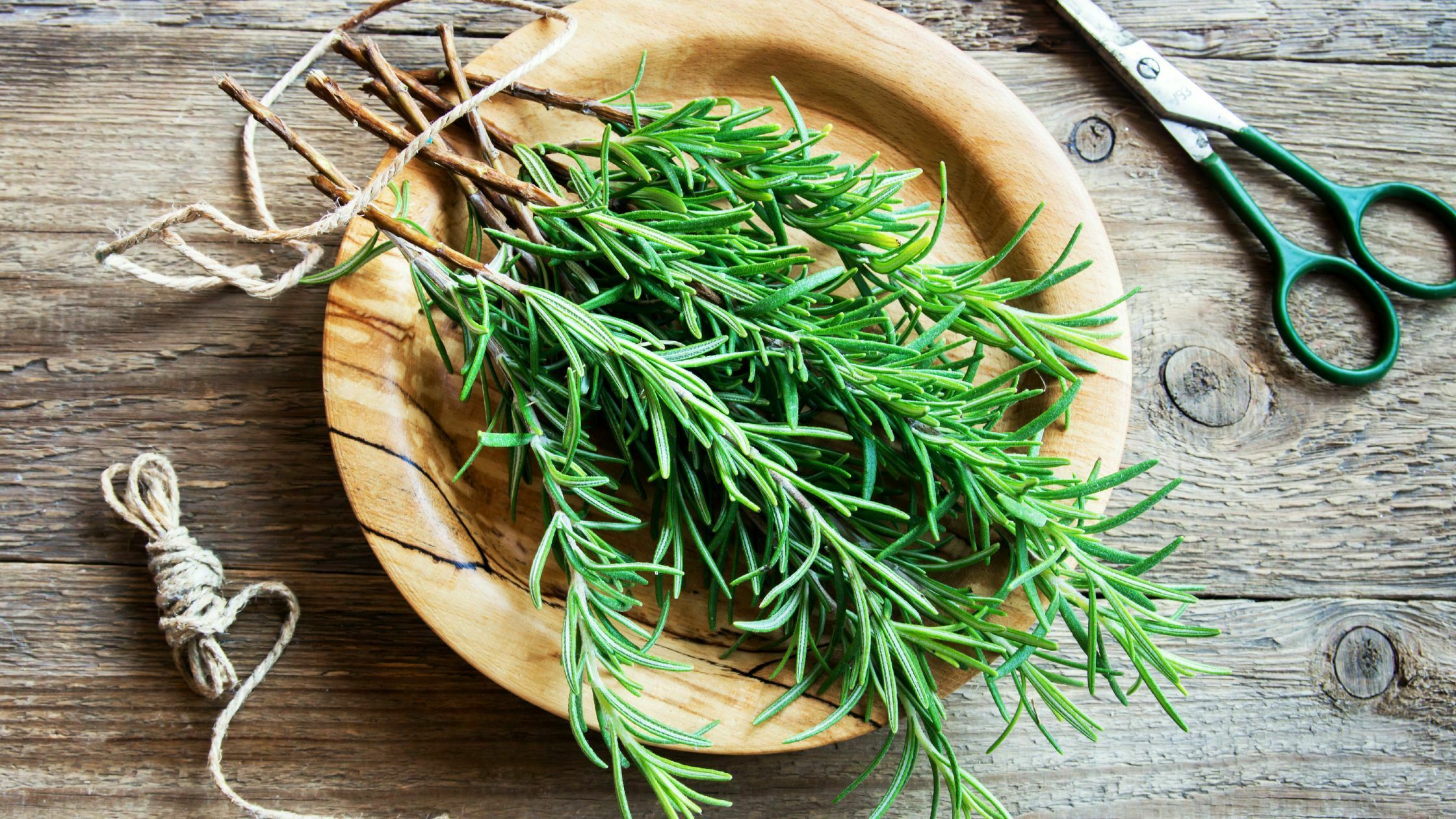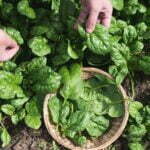Rosemary is among the most popular garden herbs to grow; if you have a rosemary plant in your garden, it means you’ll have the chance to pick fresh rosemary. Before that happens, you must learn basic skills to harvest rosemary correctly.
So, if you have some rosemary growing in your garden, you may want to prepare to harvest it. This spicy, aromatic herb can be used fresh or dried in many dishes flavoring beef, veal, pork, lamb, stuffings, soups, sauces, and salad dressings. In other words, having rosemary available is a must.
Though it may seem a little intimidating, especially when you are new to gardening, you have nothing to worry about. Harvesting rosemary is simple; however, you need to consider a few things when harvesting so that the plant can recover and maintain its attractive appearance.
How to Harvest Rosemary
Tools:
- Scissors for new stems
- Garden pruners for woody stems
- Harvest leaves and branches with a garden pruner
- Take 4 to 6-inch sprigs from the tips of the branches for kitchen use
- Strip the leaves from the stems. Never prune more than one-third of the plant at one time; severe pruning will stress the plant.
Recommended Product: Heavy Duty Kitchen Scissors
[amazon box=”B08FLKHG8J” class=”lp-product-list” template=”vertical” image_size=”large” title=” ” image_alt=”alttexthere” description=”none” price=”none” button_text=”Check Latest Price” ]
These super sharp kitchen scissors offer soft, comfort-Grip handles. These are great All-purpose scissors for kitchen, household, home, car, and general outdoor use.
The blades are made of high-quality hardened stainless steel, easily cut through cardboard, twine, food, meat, vegetables, chicken, poultry, fish, herbs, seafood, BBQ, food packing bags, and more.
Features:
- Stainless steel blades
- Ergonomically designed handle
- Cushioning pads
Recommended Product: Sharp Anvil Pruning Shears
[amazon box=”B01CULCL62″ class=”lp-product-list” template=”vertical” image_size=”large” title=” ” image_alt=”alttexthere” description=”none” price=”none” button_text=”Check Latest Price” ]
Quality blade made of high carbon SK-5 steel with chromium-plating technology. SK5 carbon steel blades are ultra-strong, sharper, stay sharper than your ordinary blade, and last even longer.
The pulley design and the spring-loaded mechanism that easy to cut branches with less effort.
As you squeeze pulley pruning Scissors, the pulley will scroll, providing ever-increasing pressure as you cut, thus decreasing the force you need to apply on the handle.
Features:
- High Carbon Steel
- Ergonomically designed
- Non-slip handles
How do you pick rosemary so it keeps growing?
Harvest rosemary by snipping sprigs with pruners or kitchen scissors. New growth will be flexible and lighter green, while older growth will be woodier and darker. Either is fine to use, but new growth may be more fragrant and easier to chop.
How do you harvest rosemary without killing the plant?
- Choosing the right time to harvest means avoiding harvesting in the winter, the dormant season.
- Select new shoots from the plant that is at least 20 cm long
- Cut the stems on about 3/4 of the plant max
- Leave at least 1/4 of the branch intact with as many leaves as possible
- Water the plant thoroughly
- Add some fertilizer to help the plant recover.
- Watch over your plant or bush regularly to spot any unusual development
How do you know when rosemary is ready to harvest?
If you plan on growing rosemary for drying, it is best to wait until just before the plant starts to bloom. At this point, the leaves are loaded with oil content. Harvesting the leaves as soon as flowers appear will give you the best flavor and most aromatic leaves.
Will rosemary grow back after harvesting?
Cut the entire plant back in late winter to early spring to renovate older rosemary. Rosemary is no exception as other needled evergreens; the plant does not regrow from bare old wood.
How long does it take to harvest rosemary?
Rosemary can be harvested all year round, although the best harvesting time is in summer, just before or during flowering when the aromatic oils are at their peak and the plant’s essence is best preserved. I also collect all my cuttings at the pruning time.
How to use rosemary in the kitchen?
- Leaves: Use fresh or dried leaves in sauces, stews, soups, and meat and poultry dishes. Rosemary enhances tomatoes, spinach, peas, mushrooms, squash, cheese, and eggs.
- Stems: Toss rosemary stems on the coals to flavor barbecues just before the meat is finished. Use stems as a brush to apply barbecue sauce to the chicken.
- Flowers: Flowers can be sprinkled on salads or used in herbs, butter, or cream cheese spreads.
Should rosemary be stored in the fridge?
You can wrap sprigs in a clean towel; they will stay fresh in the refrigerator crisper for as long as two weeks.
You can also store dried rosemary leaves in an airtight container out of sunlight.
Recommended Product: Airtight Food Storage Containers
[amazon box=”B07C79SGBC” class=”lp-product-list” template=”vertical” image_size=”large” title=” ” image_alt=”alttexthere” description=”none” price=”none” button_text=”Check Latest Price” ]
Made of high-quality BPA-free material, these air-tight containers are durable and shatterproof. The plastic of these containers is obvious; you can identify the contents without opening them.
With a special sealing mechanism, you can safely open or close these plastic containers using only two fingers. Flip the ring to open or flip the ring down to lock and seal.
Features:
- BPA free material
- Sealing mechanism
- Reusable labels
How to preserve rosemary for a longer period?
- Rosemary can be dried for storing by setting the leaves on a screen or drying tray in a shady, warm place. Gather bunches and hang them upside down in a cool, shady place.
- Rosemary leaves can be frozen in a freezer bag.
How to grow rosemary?
- Soil preparation. Rosemary grows best in light, well-drained soil. Rosemary will endure poor soil as long as it is well-drained. Rosemary prefers a soil pH of 6.5 to 7.0.
- Seed starting indoors: Sow rosemary seeds indoors in spring. Sow seed in potting soil under fluorescent lights. Seed can take up to 21 days to germinate at 65° Rosemary can also be grown from cuttings. Start cuttings from new growth in spring or late summer.
- Transplanting to the garden: Set out rosemary transplants after the last spring frost.
- Planting depth: Sow rosemary seed ¼ to ½ inch deep.
- Spacing: Space plants 18 to 36 inches apart.
What are some rosemary varieties?
- Rosmarinus prostrates. This variety will sprawl. The flowers of prostrate rosemary are a deeper blue than upright varieties.
- Tuscan Blue. It is a rigid, upright variety that can grow to 6 feet tall.
- Albus. Presents white flowers.
- Collingwood Ingram. It has gracefully curved stems and grows 2 to 3 feet tall.
- Lockwood de Forest. It can be 18 to 24 inches tall.
Recommended Product: Rosemary Culinary Herb
[amazon box=”B002TTK7AS” class=”lp-product-list” template=”vertical” image_size=”large” title=” ” image_alt=”alttexthere” description=”none” price=”none” button_text=”Check Latest Price” ]
Rosemary herbs will grow to a mature height of roughly 12 to 36 inches, taking up minimal space.
Rosemary is considered a perennial herb, growing from seed to establish a deep root system. This deep root system will allow them to return the following growing season, growing fresh plant life.
Like many other culinary herbs, Rosemary can be grown in pots and containers to save on growing space.
Features:
- Non-GMO
- The current and following growing season
Additional Tips on How to Harvest Rosemary
- If you plan on drying the rosemary, wait until the bush begins to bloom to harvest. This is when the leaves contain the most oil and flavor.
- Keep several plants at once to ensure you always have some mature branches from which to harvest.
- If you want to use a small amount of fresh rosemary at a time, you can pick off a few of the leaves from the top parts of the sprigs.
- Remember not to harvest rosemary too close to winter because it will not grow back very fast.
- Even if you are not harvesting it to use, you should prune rosemary several times a year to encourage healthy growth.
- Before harvesting rosemary, wash the pruning shears in hot water to remove any bits of plant debris left over from previous uses.



